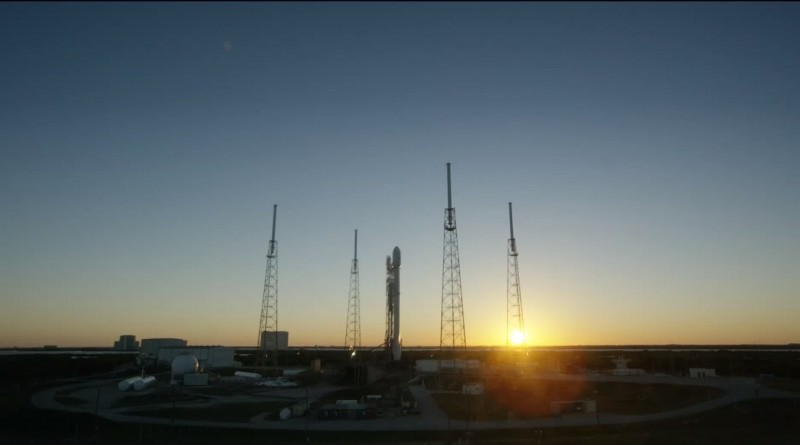SpaceX Falcon 9 aims for Twilight Liftoff on Friday
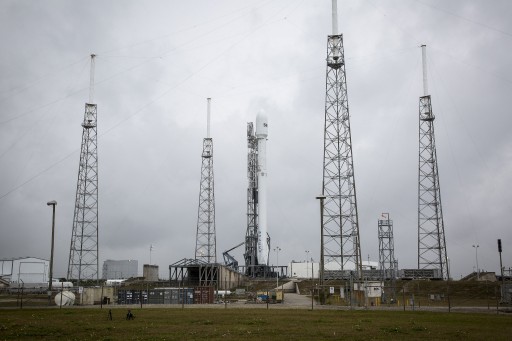
SpaceX is setting up for the company’s fifth attempt to launch a Falcon 9 rocket carrying the SES-9 communications satellite – hoping for calm winds, clear seas and cold LOX on Friday to get Falcon 9 off the ground after a series of slips.
Friday night’s window opens at 23:35 UTC and stretches to 1:06 UTC, though only a portion of this window will be usable by the 70-meter tall rocket that will again aim for the Autonomous Spaceport Drone Ship to return its first stage booster as a secondary mission objective.
The first countdown on Wednesday, February 24 was ended ahead of tanking when SpaceX determined that winds were not particularly favorable and an additional day would be needed to sufficiently chill the Liquid Oxygen to be pumped into the two-stage rocket. Because of SES-9’s weight of 5,300 Kilograms and its high-energy orbit, Falcon 9 needs all of its performance, requiring the LOX to be at the proper density to fill the stages up to flight mass, directly dependent on temperature.
The next day’s launch attempt was abandoned inside two minutes to T-0 when SpaceX had to call a scrub because the LOX loading sequence would not finish to permit a liftoff, again reflecting the tight margins of this mission beginning with the tanking sequence, timed to fill up the LOX tanks as close to launch as possible.
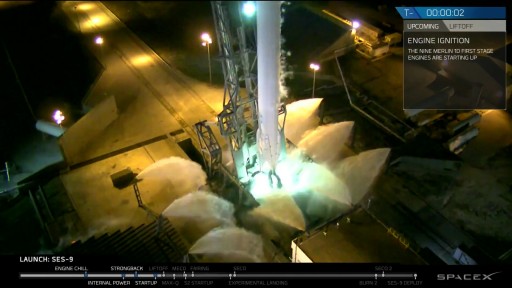
Another attempt Sunday night could have resulted in a successful liftoff if it had not been for a boat entering the downrange safety area, causing a 34 minute hold in the countdown.
When the boat had finally moved out of the area, the oxygen in Falcon’s tanks had warmed up and the ignition of the nine Merlin 1D engines was aborted at the last second when one engine showed a low-thrust condition likely due to a Helium bubble released from the warming LOX in the turbulent flow inside the engine piping.
Falcon 9 remained safe after its aborted ignition and SpaceX recycled for a launch attempt on Tuesday, but an extreme wind shear around ten Kilometers in altitude would not permit a safe ascent of the rocket, leading to another launch delay.
Setting up for a Friday attempt, SpaceX is looking at better conditions in the upper atmosphere with peak winds of 100 knots at an altitude of 11 Kilometers. Weather conditions on the ground are looking favorable as well with only a 10% chance of weather rule violations during the window due to slight concerns of Cumulus Clouds moving over the area during the day. After sunset, skies are expected to clear and winds will die down to create good conditions for Falcon’s post-sunset liftoff.
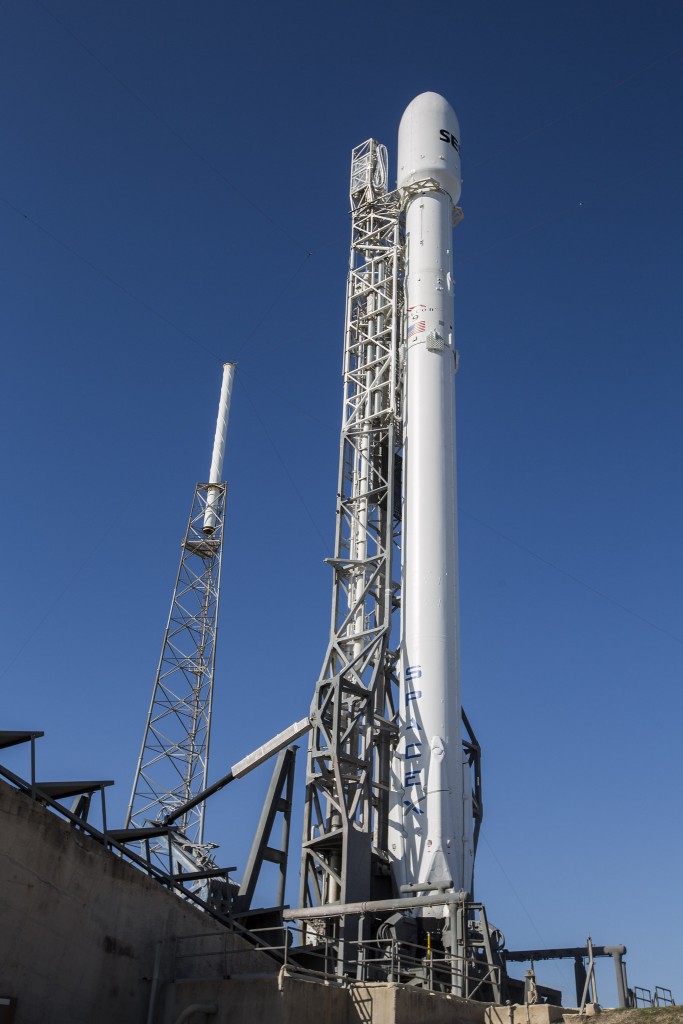
In case of problems on Friday, weather will remain cooperative on Saturday with calmer Upper Level Winds and only a slight concern of clouds over the launch site.
Hoping for an on-time liftoff, Falcon 9 will be loaded with around 500 metric tons of Liquid Oxygen and Rocket Propellant-1 starting half an hour prior to T-0, heading into its critical Terminal Countdown at T-10 minutes to set the stage for the ignition of the nine engines with three seconds on the countdown clock. Falcon 9 is aiming for a launch just ten minutes after sunset, flying into illumination a short time after lifting off with its engines delivering nearly 700 metric-ton-force of thrust at launch.
The nine Merlin 1D engines on the first stage will fire for two minutes and 36 seconds, accelerating the vehicle to a speed of over 2.5 Kilometers per second. Following separation, the first stage will embark on its daring return – attempting a high-risk return that is not expected to succeed given the energy of the booster at separation and severely limited reserves of propellant which will not permit the vehicle to fly a ‘standard’ return profile with three burns as part of the descent.
Instead of conducting a boost-back maneuver, the first stage will remain on a ballistic trajectory and home in on the Autonomous Spaceport Drone Ship, stationed 660 Kilometers from Cape Canaveral. Because the first stage can not slow down ahead of re-entry, it will have to endure extreme forces and temperatures not seen in previous attempts including the successful booster landing in December.
Making its most torturous re-entry to date, the booster will deploy its four actuated grid fins to guide itself to the ‘Of Course I Still Love You’ Drone Ship followed by a landing burn that will hopefully result in the first stage coming to rest on its four landing legs to mark SpaceX’s first successful booster landing at sea.
The second stage will fire its MVac engine for a little over six minutes to reach a Low Earth Parking Orbit, shedding the large payload fairing along the way, around three minutes and 42 seconds into the mission. Once in orbit, the second stage will coast for 18 minutes to be able to fire its engine again when passing the equator so that the high-point of the insertion orbit is also located over the equator, easing the process of maneuvering SES-9 into Geostationary Orbit.
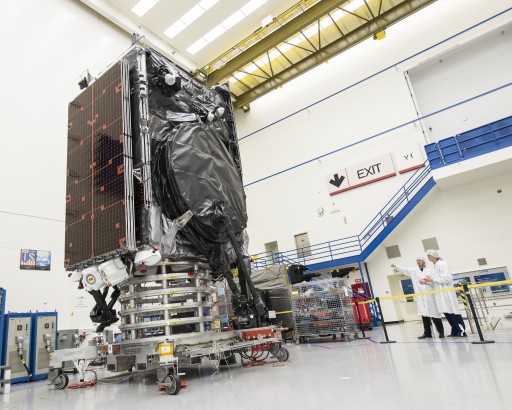
The second burn of the MVac engine is expected to commence 27 minutes after liftoff and last 48 seconds, though the second stage has been programmed to burn as long as possible, cutting off when propellants reach a minimum residual level.
This is hoped to deliver an additional boost in speed by firing for a few seconds longer than for a guided shutdown, lifting the orbit’s apogee to supersynchronous altitude over 39,000 Kilometers. The actual insertion orbit will depend on the second stage’s performance which is driven by the mass of fuel on board, explaining why SpaceX is putting a priority on propellant temperatures.
SES-9 will be sent on its way 31 minutes after liftoff, ready to begin a 45-day climb into Geostationary Orbit to reach its position at 108.2°E from where it will deliver TV and data services to millions of households in the Asia Pacific Region as well as mobile customers at sea and in the air.

